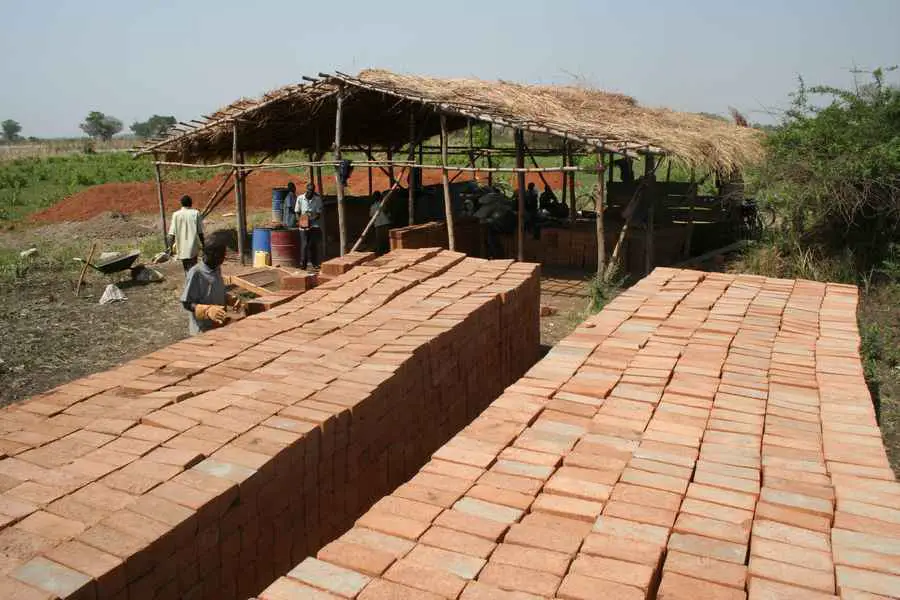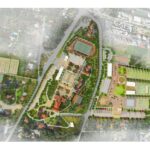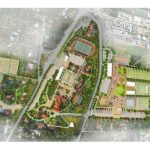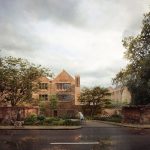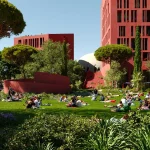Uganda School Architecture, Vocational Training Centre Building, Article 25 Africa, Project, Design
Uganda Architecture – Brick Making : Article 25 Development in Africa
Ugandan Building – Construction Process
6 Feb 2012
From Brick Making to Peace Building : Uganda
‘Article 25: the built environment’s charity’
![]()
Monthly Report by Jessica Toale for Article 25
Written for www.e-architect.com
Vocational Training Centre for Former Child Soldiers, Patongo, Uganda
In all of our projects we aim to use the most sustainable – environmentally, socially and financially – materials available. Determining what these are requires undertaking an initial materials audit, a study of vernacular technique, and a skills audit to determine the best approach and where it might be possible to improve existing techniques and skills. Often times in environments of extreme resource scarcity, the most plausible solutions becomes to import materials; however in other cases where we are able to work with the local materials and improve techniques and processes our projects have the ability to become a conduit for education in the community and address deep-seated issues around trust and peace building.
Picture 1 – Local bricks in Patongo market place
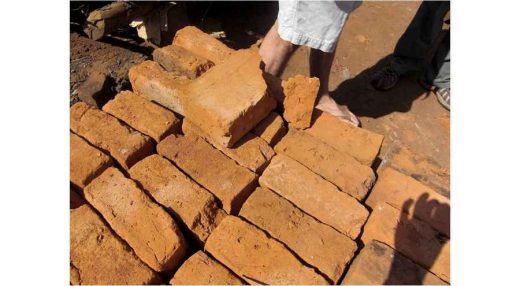
Bricks are often the main structural material used in our building projects across Africa. However, availability and quality of this material differs from one place to another and is often extremely poor. This results in buildings that have recently been built becoming dilapidated, structurally unsound and vulnerable to hazard risk, thus becoming unsafe to the people who use them. This undermines the ability of a building to function in society as a place of education, health care or economic activity further entrenching underdevelopment. In addition, the environmental impact of the brick making process and lack of engineering skills also add to the challenge of finding quality materials for construction.
Picture 2 – Reproduction of stabilised soil blocks
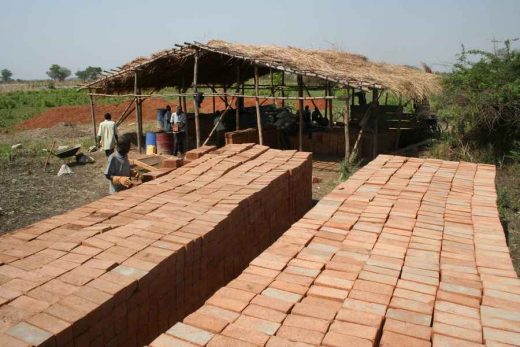
In Uganda, we are building a vocational training centre for former child soldiers with Jubilee Action. The project is nearing completion, but at the outset we required around 750,000 bricks for the job. The quality of existing brick available in the market was extremely poor. As a result, our solution was to source murram, a type of sub-soil, from a local quarry about 6.5km from the site to produce pressed stabilised soil blocks (SSB). We chose not to fire the bricks as is common practice in the region due to endemic shortages of timber and the subsequent negative environmental impact that that process has. Instead our project partner Jubilee Action bought two brick presses from Kenya for the community to keep and use in the future.
Picture 3 – Training on the brick presses
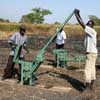
The process of creating the SSBs includes sourcing the murram material, drying and pulverising it where necessary and ensuring it contains no organic material by sieving it with a 6mm wire mesh. To stabilise the murram we mixed it with cement and water, then tested it to ensure the composition was not too wet or too dry. It is important that the mixture holds together in a ball. We found that approximately a 6% cement stabilisation was sufficient. This equated to about 7 wheelbarrows of soil to 1 bag of cement and produced approximately 90 290x140x120mm bricks.
Picture 4 – Sieving the murram
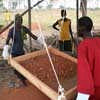
Picture 5 – Correct composition of soil-cement mix

Once the mixture is correct, the blocks are pressed and left to cure for a period of 5-7 days in a humid environment which is achieved by covering the bricks with waterproof black sheeting. After this they are left to dry out for approximately 14 days. The blocks then undergo rigorous testing 28 days after they are produced to ensure their quality. The three main tests of block strength include the bucket test submerging a block in water for 24hours, dropping the block from a distance of 1 metre and compression strength testing under the weight of a person. This process is then repeated with periodic quality testing until enough bricks are produced for the building.
Picture 6 – Compression strength testing the bricks
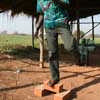
The brick work in this project was completed before Christmas, and the roof bracing was fitted in early January. As of last week the roof sheeting was being fitting to the building.
Picture 7 – Latest site photos with roof sheeting
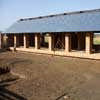
There are a number of complexities involved in humanitarian work including access to skills, materials and information that require innovation and flexibility. We are also working in extremely complex social and political contexts with communities recovering from years of Civil War or dealing with extreme privation. These factors must be considered in all of Article 25 projects and addressed to ensure that building projects become a conduit for skills training, building community trust and ultimately peace building.
For more information on this project, please visit our website www.article-25.org
Previous information on this Ugandan Building:
Uganda Vocational Training Centre Building

photo © Article 25
Uganda Building
Location: Patongo, Uganda, Africa
Ashinaga Uganda Dormitory in Nansana, Uganda
For more information about Article 25 please contact Article 25 at info@article-25.org or browse the website, www.article-25.org.
Uganda Building Photos © Article 25
Monthly Reports by Article 25
Democratic Republic of Congo Schools
Uganda Architecture
National Teachers Colleges, near the towns of Kaliro and Mubende
Design: Oubuntu-DASUDA & BKVV Architects
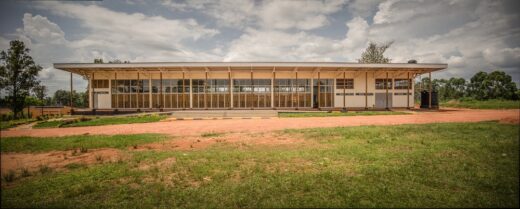
Eppo Karsijn
photos : Eppo Karsijns and Nambasa Sabrina – Frame Media
National Teachers Colleges, Mubende Uganda
Bidi Bidi Refugee Music & Arts Centre
Design: Hassell with LocalWorks
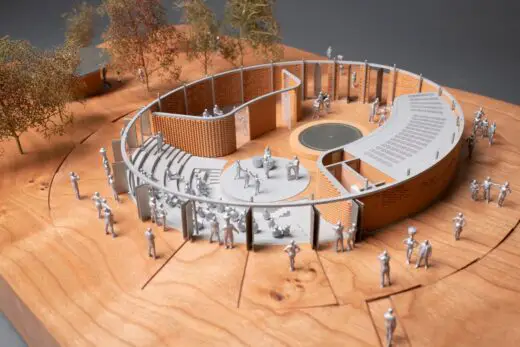
image courtesy of architects office
Bidi Bidi Pavilion at London Design Biennale
Kampala Tower
Capita Symonds
Kampala Tower Building
British High Commission Kampala
Kilburn Nightingale Architects
British High Commission Kampala
African Architectural Designs
Contemporary Africa Architectural Designs – recent selection from e-architect:
Pure Power/Daily Combat Strategy for Water Collection, Rujewa, Tanzania, eastern Africa
Design: Hong-En,Lin
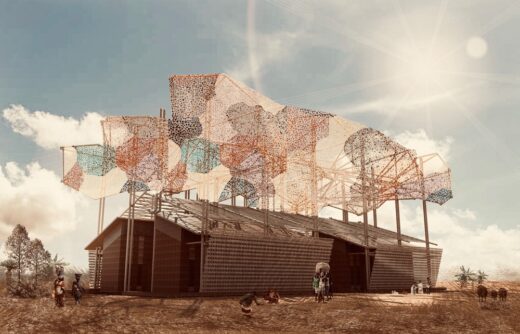
render : Hong-En,Lin
Pure Power, Tanzania, Eastern Africa
Comments / photos for the Uganda Architecture – African Brick Making page welcome.

